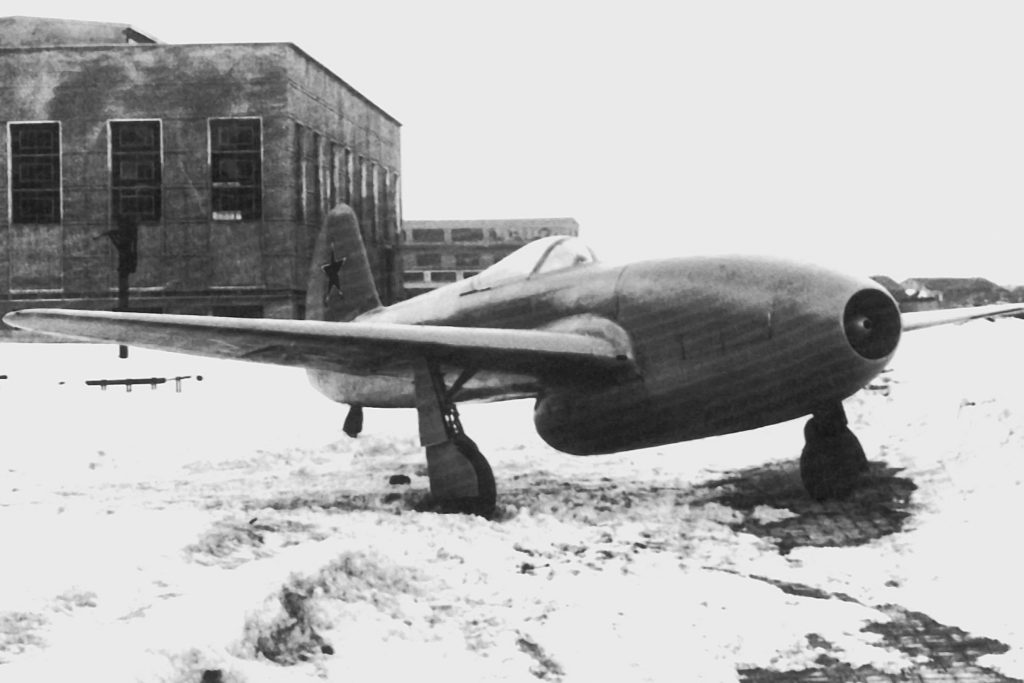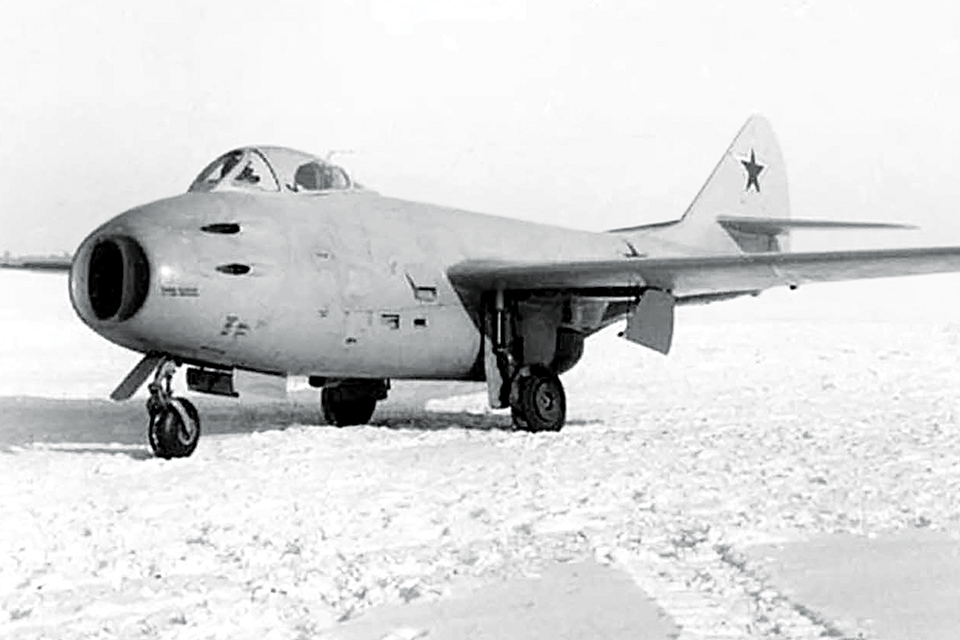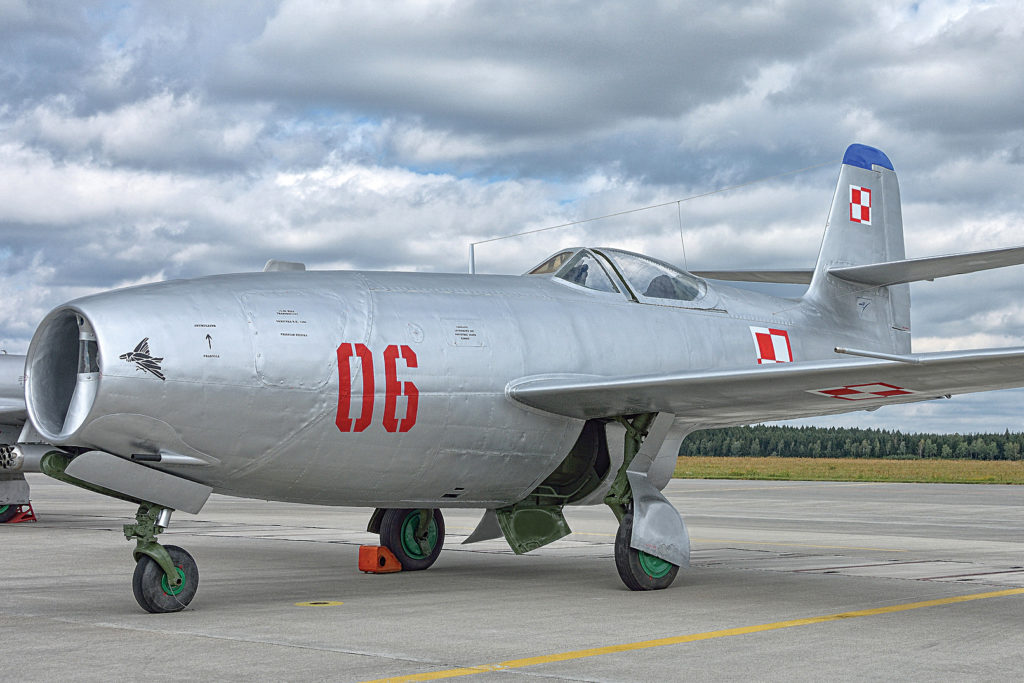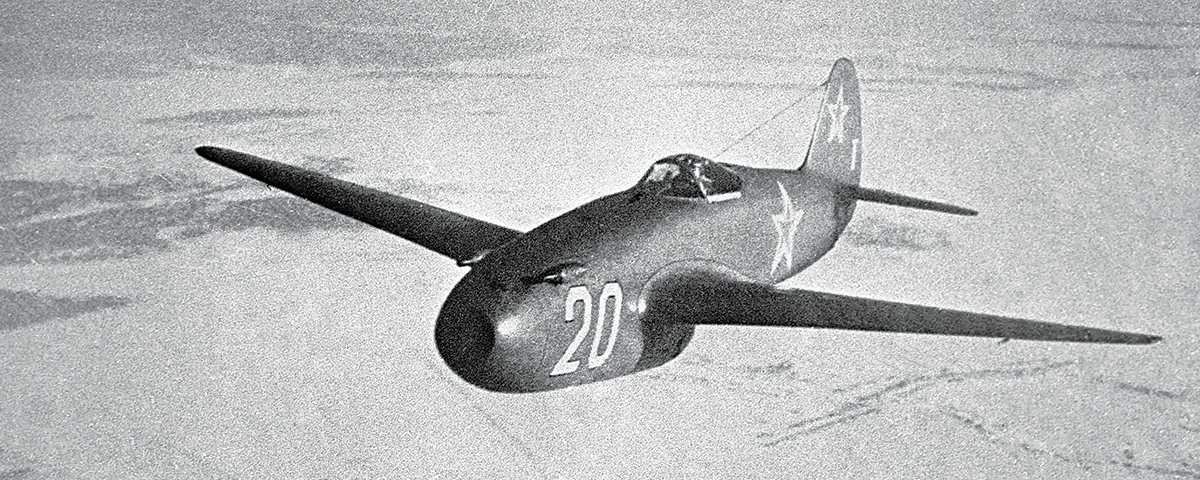Yakovlev’s simple approach to developing the Soviet Union’s first jet fighter worked remarkably well.
As World War II drew to a close, all the major combatants except the Soviet Union were readying new turbojet-powered fighters for operational use. That state of affairs was unacceptable to Soviet dictator Joseph Stalin. On April 9, 1945, Stalin, through the Council of People’s Commissars, issued a directive to the Yakovlev Design Bureau to create a jet fighter for the army air force, or Voyenno-Vozdushnye Sily (VVS). In the Soviet Union at that time, whatever “the Boss” ordered had to be performed as soon as humanly possible…or else.
Although it had produced some of the best Soviet fighters of the war, Aleksandr Yakovlev’s design bureau had no experience in jet aircraft design. He and his engineers decided that the quickest way to satisfy the requirement was to adapt an existing piston-engine fighter to jet power, and that the best candidate was their Yak-3U. Introduced in 1944, the Yak-3U was an all-metal development of the earlier wood-and-metal Yak-3 lightweight fighter. Essentially a lightened and downsized variant of the Yak-1, the Yak-3 boasted excellent performance and was greatly favored by the VVS fighter force. It was regarded by many as a true pilot’s airplane comparable to the British Spitfire. Among the Yak-3’s most famous exponents were the French volunteers of the Normandie-Niemen Regiment, who brought their Yak-3s back to France with them at war’s end.

Transforming the Yak-3U into a jet fighter proved to be surprisingly straightforward. The Klimov piston engine in the nose was simply replaced by a turbojet. Produced in the Soviet Union as the RD-10, the jet engine was a reverse-engineered copy of the Junkers Jumo 004 turbojet used in the Messerschmitt Me-262. The engine was arranged to exhaust beneath the fuselage in a stepped configuration, known in Russian as “redan.” This gave the aircraft something of a tadpole appearance when viewed from the side, although from above it was almost indistinguishable from the original Yak-3.
In order to protect the aircraft skin from the jet blast, the bottom of the rear fuselage was sheathed in steel. Initial engine ground testing quickly revealed that the heat shield was too short and needed to be extended farther back. The rubber tailwheel, which had been melted by the heat, was replaced with a steel roller. Two 20mm Nudelman cannons with 60 rounds per gun were mounted above the prototype’s nose, later to be replaced in the production version by 23mm Nudelman-Suranov NS-23 cannons.

First flown on April 24, 1946, the Yak-15 became only the second Soviet jet fighter to take to the air. Actually, both the Yak-15 and the competing MiG-9 prototypes flew on the same day. The story goes that Yakovlev and Artyom Mikoyan flipped a coin to determine which jet would have the honor of taking off first, and that Mikoyan won the toss, so the MiG-9 flew a few minutes before the Yak-15. Mikoyan and his partner, Mikhail Gurevich, were to remain ahead of Yakovlev in the field of fighter aircraft development from that day on.
Unlike the Yak-15, the MiG-9 was a completely original design and had two engines mounted in the fuselage. It weighed twice as much as the Yak, however, which meant that its performance was no better. Moreover, the MiG-9 suffered from serious design flaws, some of which were never entirely rectified. For example, firing its guns could cause the engines to flame out.
The Yak-15 was among the smallest jet fighters ever produced, with a wingspan of 30 feet 2 inches, a length of 28 feet 6 inches and a maximum loaded weight of just 5,800 pounds. It had a top speed of 500 mph, a ceiling of 43,800 feet and a range of only 320 miles. The Yak-15 was never viewed as anything more than an interim measure until more sophisticated jet fighters could be developed, but it proved very useful as a transition trainer for the first generation of Soviet jet pilots. It enabled them to learn the fundamentals of flying a jet airplane in an aircraft that retained the excellent handling characteristics of the Yak-3. As a result, 280 examples were produced. A two-seat conversion trainer variant, designated the Yak-21, was also developed.

Due to the Yak-15’s short range and awkward tailwheel, Yakovlev quickly began work on an improved version. The result was the Yak-17, first flown in May 1947, which introduced a larger tail, tricycle landing gear with a semi-retractable nose wheel and wingtip fuel tanks, increasing range to 446 miles. Some 430 Yak-17s were produced before Yak completed its series of redan fighters with the Yak-23.
First flown in 1948, the Rolls-Royce Derwent–powered Yak-23 represented a distinct improvement over its predecessors. The fighter featured a new wing, higher-set tailplane, fully retractable nose wheel and armament mounted below the nose, where the muzzle flash would not blind the pilot. By the time it was test flown, however, the superior MiG-15 was under development, so Yak-23 production was halted after 310 examples had been built.
The Yak-15 was one of only two successful adaptations of a piston-engine fighter to jet power. The only other instance was Sweden’s Saab J-21R, a de Havilland Goblin–powered derivative of the J-21, a twin-boom pusher fighter powered by a Daimler-Benz DB 605 piston engine. Only one example of the Yak-15 survives today, on display at the Vadim Zadorozhny Museum of Technology in Moscow.
This feature originally appeared in the March 2019 issue of Aviation History. Subscribe here!





